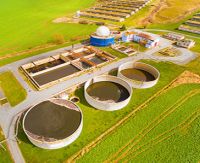- Biobutanol is a “bio-alcohol” made from biomass (e.g. corn, other plant matter), similar to how bio-ethanol is produced.
- Compared with ethanol, biobutanol has several advantages: it has higher energy content (closer to gasoline), lower water absorption (less hygroscopic), and lower vapor pressure — making it more stable.
- Because of those properties, biobutanol can — in principle — be used in existing storage, distribution, and fueling infrastructure, which reduces the need for major new investments.
Uses of Biobutanol in the U.S.
Here are how biobutanol has been — or is planned to be — used in the U.S.:
- Gasoline blending / drop-in fuel: Biobutanol has been approved (in certain blends) as a gasoline additive or substitute. According to the U.S. Environmental Protection Agency (EPA), blends with up to 16% biobutanol by volume (assuming no other oxygenates) are permitted, roughly equivalent in regulatory terms to low-percentage ethanol blends.
- Compatibility with existing engines and infrastructure: Studies (e.g. by Oak Ridge National Laboratory) show that fueling equipment already certified for ethanol blends would also work with biobutanol, and pipelines or tanker/rail distribution would be feasible.
- Marine / recreational boating fuel: The recreational boating industry in the U.S. has tested and evaluated biobutanol-gasoline blends (up to ~16%) for marine engines — in part because biobutanol’s lower water absorption reduces problems that ethanol-gasoline blends can cause in boat fuel systems.
- Industrial chemical feedstock & solvents: Beyond fuel, biobutanol produced from biomass can substitute for petroleum-derived butanol (or other butanol) in industrial applications — solvents, coatings, plastics, and fibers. This means even if fuel use remains niche, biobutanol can find uptake in chemical manufacturing.
What’s the Current Reality (Scale & Limitations)
Despite its potential, use of biobutanol in the U.S. remains very limited. According to a report from 2018:
- Only small volumes have ever “entered the market.” For example, by 2016 around 125,000 gallons had been introduced, and some years had none.
- Economic and practical challenges: More ethanol can be produced per bushel of corn than biobutanol (for example ~2.7–2.8 gallons ethanol vs ~1.5 gallons biobutanol from a bushel of corn).
- Because of that, and because ethanol remains cheap and well-established, biobutanol has struggled to scale up — at least so far.
That said, there is recognized potential: some U.S. refineries have been retrofitted from ethanol to biobutanol production; and biobutanol remains part of research and development plans to produce “advanced biofuels” that can reduce greenhouse-gas emissions and be used without changing existing fueling infrastructure.
Why Biobutanol Doesn’t Lead Biofuels in the U.S.
- The scale of production remains small — far overshadowed by ethanol and biodiesel/renewable-diesel.
- Corn-based production means pressure on feedstock: since ethanol yields more per bushel, ethanol remains more economically attractive for many producers.
- Policy and infrastructure have strongly favored ethanol (and biodiesel/renewable diesel), because those are well-established and widely accepted fuels for blending under the Renewable Fuel Standard (RFS) and other regulations.
